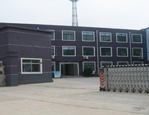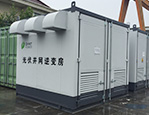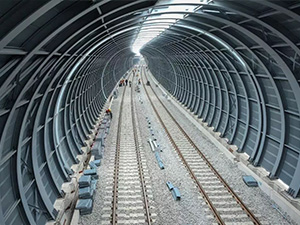Sound absorption spires
Publish date:2018-06-26 Views:746

Material Science:
The sound absorption wedge is a special absorber, which requires almost all the sound waves incident on its surface to be absorbed. The sound absorption wedge consists of base part and split part, and the base part is an invariant part of the bottom section, and the chop part is gradually enlarged from the tip. As the split section of the sound absorption chop increases gradually from an early age, it matches the air characteristic impedance so that the incident sound wave is almost completely absorbed without reflection.
The ratio of the length of the split part (the section to the section) and the split section (section variation) is usually controlled around 1:4, which is unsuitable for too large and too small. If the base length is 200mm, the length of the split part is 800mm, so that the length of the sound wedge is 1000mm. The size of the wedge is generally long, so it is necessary to have a skeleton for easy installation. It is usually welded with a steel bar with a diameter of about 4mm, which is too small and most unsuitable. Too small affects the stiffness of the skeleton, too large, although it can increase the rigidity of the skeleton, but it will produce the reflection of the high frequency sound wave and affect the sound absorption performance of the wedge.
Specifications:
The sound absorption wedge can be divided into sharp and flat heads according to the shape. According to the difference of the splitting number of a unit, it can be divided into single splitting, double splitting and three splitting. According to the difference of the split length, it can be divided into long split and short chopping; according to the difference of the split sound absorption material, it can be divided into inorganic fiber sound absorption materials (such as glass cotton, rock wool, slag cotton, etc.), and organic fiber sound absorption materials (such as the sound absorption material (such as) Synthetic resin fiber cotton and sound absorbing foam such as polyurethane foam.
At present, the most used is the cleavage of the glass cotton as a sound absorbing material. The glass cotton is cut according to the size of its split skeleton, and then it is put into the skeleton. In order to prevent the dispersion of the fiber, the fabric is used to make a wedge. Usually a glass fabric, the outer layer of a plastic window, to cover the wrinkles that may be produced, can play a certain role in decoration, the split surface material is cheaper. With the popularization of the application of chemical fiber fabric, it is also possible to use the sound - permeable flame retardant fiber cloth sleeve, with a variety of color selection, with better appearance and decorative effect, but the price is more expensive. Sometimes, in order to make the edges of the sound absorption wedge clear and shave, replace the plastic window screen coat with wire mesh or perforated metal plate. In particular, the sound absorbing wedge of perforated metal plate has good strength and rigidity, no deformation and strong durability. The sound absorbing wedge of wire mesh and perforated metal plate also has a certain electromagnetic shielding effect.
Use:
The main purpose of the sound absorption wedge is to build an anechoic room. The anechoic chamber is a sound absorbing wedge installed on the surface of the room, so that the sound wave incident on it is absorbed almost completely without reflection. The floor, ceiling, and wall are all equipped with a sound absorption room called a full acoustic chamber. It is suitable for acoustic characteristics tests such as acoustic research and sound equipment. The room is only equipped with sound absorption spires on the ceiling and wall, and the ground made of hard smooth (such as marbles and marble ground) is called a semi anechoic chamber. It is suitable for the noise test of mechanical and electrical equipment.











